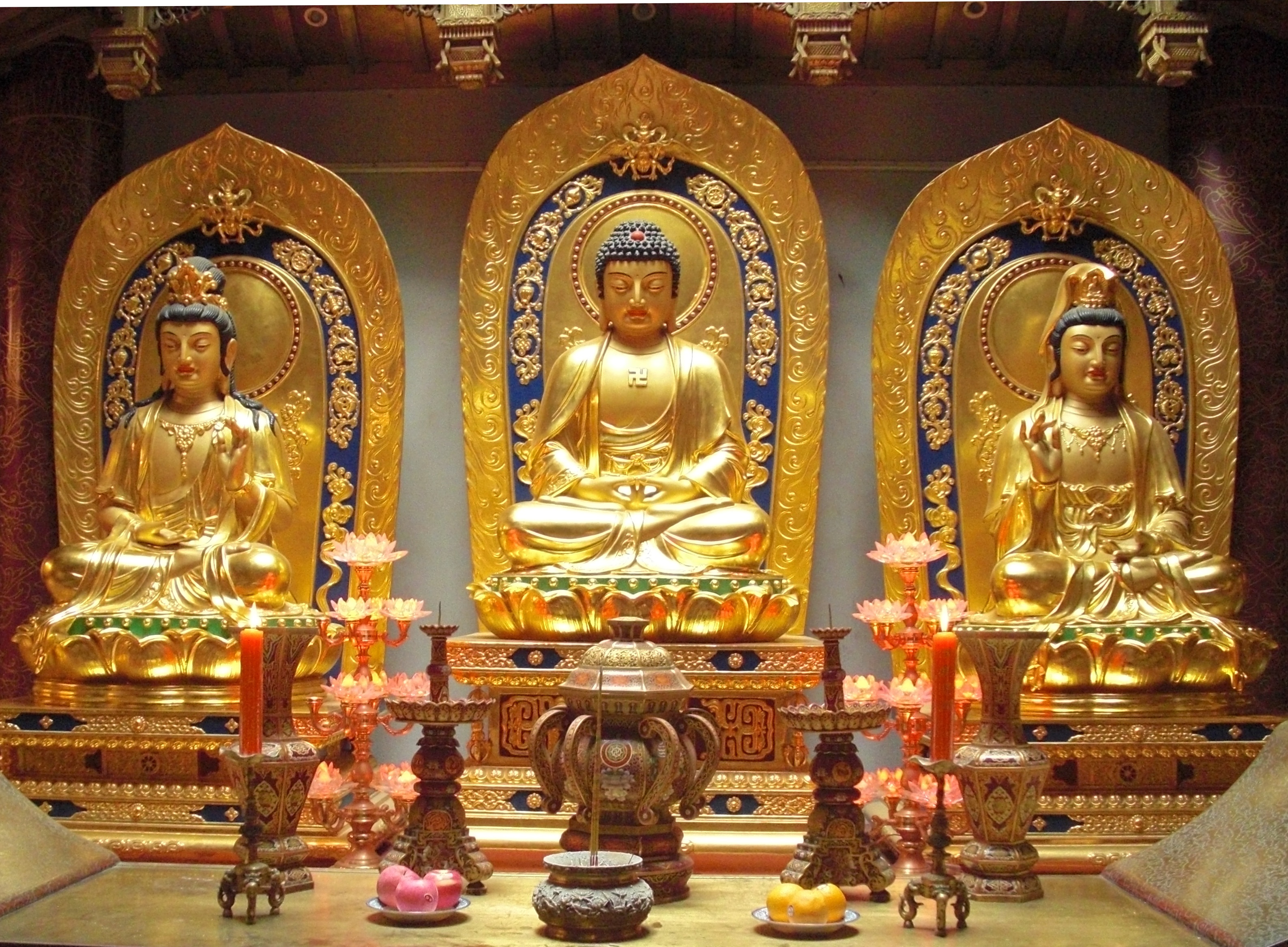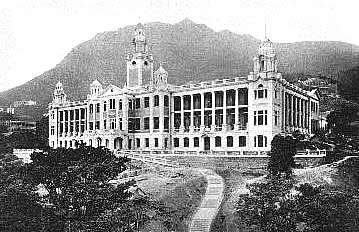|
Yuanzhao
Yuanzhao (Chinese: 元照, 1048–1116), styled Zanran Yuanzhao and Lingzhi Yuanzhao (靈芝元照) was a distinguished scholar-monk and Vinaya master of the Vinaya school during the Song dynasty (960–1279 CE).Chi-chiang Huang. �Pure Land Hermeneutics in the Song Dynasty: The Case of Zhanran Yuanzhao (1048--1116).�� (2000). He also taught and wrote on Pure Land Buddhism and Tiantai. After a period of illness later in life, he became a staunch Pure Land Buddhist, composing commentaries on the '' Amitabha Sutra'' and the '' Contemplation Sutra''. Yuanzhao was a key reformer of the Vinaya school during the Song dynasty, widely administering its monastic ordination ceremonies to monks and bodhisattva precepts to laypersons. He is also one of the most prominent Song era Pure Land commentators whose works are still extant. Overview A native of Yuhang (modern Zhejiang Province), he was born in 1048, the eighth year of the Qingli reign, with the secular surname Tang (唐). Ordained u ... [...More Info...] [...Related Items...] OR: [Wikipedia] [Google] [Baidu] |
Vinaya
The Vinaya (Pali and Sanskrit: विनय) refers to numerous monastic rules and ethical precepts for fully ordained monks and nuns of Buddhist Sanghas (community of like-minded ''sramanas''). These sets of ethical rules and guidelines developed over time during the Buddha's life. More broadly, the term also refers to the tradition of Buddhist ethical conduct. The term "Vinaya" also refers to a genre of Buddhist texts which contain these precepts and rules and discuss their application, along with various stories of how the rules arose and how they are to be applied. Various lists and sets of Vinaya precepts were codified and compiled after the Buddha's death in different Vinaya texts.The 17th Karmapa Orgyen Trinley Dorje. "The development of the Vinaya rules for monastics and the Pratimoksha Sutra precepts". August 2022. Transcribed by Adele Tomlin, ''Dakini Translations'', 02 September 2022. As one of the main components of the canonical Buddhist canons (Tripiṭakas), a ... [...More Info...] [...Related Items...] OR: [Wikipedia] [Google] [Baidu] |
Pure Land Buddhism
Pure Land Buddhism or the Pure Land School ( zh, c=淨土宗, p=Jìngtǔzōng) is a broad branch of Mahayana, Mahayana Buddhism focused on achieving rebirth in a Pure land, Pure Land. It is one of the most widely practiced traditions of East Asian Buddhism, Buddhism in East Asia. It is also known as the "Lotus School" (Chinese language, Chinese: 蓮宗; pinyin: ''Liánzōng'') in China or the "Nianfo, Nembutsu school" in Japan. East Asian Pure Land mainly relies on three main Mahayana sutras, Mahayana scriptures: the ''Longer Sukhāvatīvyūha Sūtra, Sutra of Amitayus'', the ''Amitāyus Contemplation Sūtra, Contemplation Sutra'' and the ''Shorter Sukhāvatīvyūha Sūtra, Amitabha Sutra''. The Pure Land tradition is primarily focused on achieving rebirth in a Buddhahood, Buddha's "pure land", a superior place to spiritually train for full Buddhahood, where one can meet a Buddha face to face and study under them without any of the distractions or fears of our world.Williams, Pau ... [...More Info...] [...Related Items...] OR: [Wikipedia] [Google] [Baidu] |
Shandao
Shandao (; ; 613–681) was a Chinese Buddhist scholar monk and an influential figure of East Asian Pure Land Buddhism.Jones (2019), pp. 20-21 Shandao was one of the first Pure Land authors to argue that all Pṛthagjana, ordinary people, and even the most evil person, can be reborn in the Pure land, Pure Land by relying on the Other power, karmic power of Amitābha Buddha's Primal Vow, past vows. Shandao was also one of the earliest Pure Land authors to teach the primacy of faithfully reciting Amitābha's name (Ch: nianfo). Shandao saw this practice as sufficient for birth in the Pure Land, and as the supreme practice (even more important than Buddhist meditation, meditation). This, along with Shandao's efforts to teach common laypeople in various ways, like disseminating paintings of the Pure Land, made Pure Land Buddhism much more accessible and popular among the common people. Several modern scholars consider Shandao to be the central figure of the Chinese Pure Land traditi ... [...More Info...] [...Related Items...] OR: [Wikipedia] [Google] [Baidu] |
Cimin Huiri
Cimin Huiri (Chinese: 慈悞慧日, pinyin: Címǐn Huìrì; Japanese: Jimin Enichi, c. 680–748) was a figure in Chinese Pure Land Buddhism and the founder of the Cimin lineage within this tradition. Born in 680 during the Tang dynasty, Huiri emerged as one of the most influential defenders of the Pure Land School against the critiques of the Southern school of Chan Buddhism.Buswell, Robert E; Lopez, Donald S. The Princeton Dictionary of Buddhism, p. 193. Princeton University Press, Nov 24, 2013.Chappell, David W.. "From Dispute to Dual Cultivation: Pure Land Responses to Ch'an Critics". ''Traditions of Meditation in Chinese Buddhism'', edited by Peter N. Gregory, Honolulu: University of Hawaii Press, 1986, pp. 163–198. https://doi.org/10.1515/9780824842932-007 Overview Life Inspired by the pilgrimage of the translator Yijing (意靖; 635–713), Huiri embarked on a journey to India in 702. Traveling by sea, he reached the Indian subcontinent in 704 and remained there unt ... [...More Info...] [...Related Items...] OR: [Wikipedia] [Google] [Baidu] |
Siming Zhili
Sìmíng Zhīlǐ (四明知禮, 960–1028, Japanese: Shimei Chirei), also known as Siming Fazhi (四明法智), was a Chinese Buddhist scholar monk and key figure in the revival and development of the Tiantai School during the Northern Song dynasty.Getz 1994, p. 1. Revered as the seventeenth patriarch of Tiantai Buddhism, he was also posthumously titled Fazhi Dashi (法智大师), meaning "Master of Dharma Wisdom." His efforts defended and defined the orthodox philosophy of the Tiantai school, and shaped its doctrinal and ritual practices for generations. Zhili was also influential in fully integrating Pure Land Buddhism within the Tiantai school as well as for popularizing Pure Land Buddhist practice among laypersons. Life Zhili was a native the city of Mingzhou (now Ningbo), in Zhejiang Province. This region (along with a specific mountain in it) was also called Siming, hence the moniker "Siming" Zhili. Zhili was born into the Jin 金 family and went by the style name Yueyan � ... [...More Info...] [...Related Items...] OR: [Wikipedia] [Google] [Baidu] |
Daoxuan
Daoxuan (; 596–667) was an eminent Tang dynasty Chinese Buddhist monk. He is perhaps best known as the patriarch of the four-part Vinaya school (). Daoxuan wrote both the ''Continued Biographies of Eminent Monks'' (Xù gāosēng zhuàn 續高僧傳 ) and the '' Standard Design for Buddhist Temple Construction''. Legends retold in his biographies also associate him to a relic of the Buddha which came to be called Daoxuan's tooth (''Daoxuan foya'' 道宣佛牙), one of the four tooth relics enshrined in the capital of Chang'an during the Tang dynasty. He is said to have received the relic from Nezha (; Sanskrit: Naṭa), a divinity associated with Indra. Daoxuan wrote five commentaries on the four-part Vinaya known as the Five Great Works of Mount Zhongnan. He was also part of the translation team that assisted Xuanzang in translating sutras from Sanskrit into Chinese. Daoxuan was an influential cataloguer. His catalogue of Buddhist scriptures, the ''Catalogue of the Inner Ca ... [...More Info...] [...Related Items...] OR: [Wikipedia] [Google] [Baidu] |
Amitābha Sūtra
Illustrated'' Amitabha Sutra'', Korea, Deokjusa Temple The ''Amitābha Sūtra'' ( Ch.: 阿彌陀經, pinyin: ''Āmítuó Jīng'', or 佛說阿彌陀經, ''Fóshuō Āmítuó Jīng''; Jp.: ''Amida Kyō'', Vi.: ''A Di Đà Kinh''), also known as the horter''Sukhāvatīvyūha Sūtra'' (Sanskrit, ''The Array of "the Blissful'' ''Land''", or ''The Arrangement of Sukhāvatī'') is one of the two Indian Mahayana sutras that describe Sukhāvatī, the pure land of Amitābha. The text was translated into Chinese in 402 by Kumārajīva (Taishō Tripiṭaka no. 366) and it is also known in Chinese as the "Small Sutra" (''Xiaojing'').阿彌陀經 Amitâbha-sūtra Digital Dictionary of BuddhismGomez, Luis, trans. (1996), ''The Land of Bliss: The Paradise of the Buddha of Mea ... [...More Info...] [...Related Items...] OR: [Wikipedia] [Google] [Baidu] |
Amitāyus Contemplation Sūtra
The ''Amitāyus Contemplation Sūtra'' ( zh , t=佛說觀無量壽佛經, s=佛说观无量寿佛经, p=Fóshuōguānwúliàngshòufójīng, w=, l=, English language, English: ''Contemplation of Amitāyus Sutra,'' or ''Sutra on the Visualization of Measureless Life'' [''Buddha''], Taishō Tripiṭaka, Taisho no. 365) is a Mahayana sutras, Mahāyāna sutra which is important for East Asian Pure Land Buddhism, a major branch of East Asian Buddhism, East Asian Mahāyāna.Buswell, Robert E.; Lopez, Donald S. (2014). ''The Princeton dictionary of Buddhism,'' p. 332. (Princeton University Press).Williams, Paul. ''Mahayana Buddhism: The Doctrinal Foundations, 2nd edition.'' Routledge, 2009, p. 239 No Sanskrit original has been found, and the title of the sutra has been back-translated into Sanskrit by scholars as either ''Amitāyur-Dhyana in Buddhism, dhyāna Sūtra'' or ''Amitāyur-buddhānusmṛti-sūtra'' ("Amitāyus Buddha-mindfulness Sūtra"). The ''Contemplation Sūtra'' is pa ... [...More Info...] [...Related Items...] OR: [Wikipedia] [Google] [Baidu] |
Tiantai
Tiantai or T'ien-t'ai () is an East Asian Buddhist school of Mahāyāna Buddhism that developed in 6th-century China. Drawing from earlier Mahāyāna sources such as Madhyamaka, founded by Nāgārjuna, who is traditionally regarded as the first patriarch of the school, Tiantai Buddhism emphasizes the "One Vehicle" () doctrine derived from the influential '' Lotus Sūtra'', as well as the philosophy of its fourth patriarch, Zhiyi (538–597 CE), the principal founder of the tradition. Brook Ziporyn, professor of ancient and medieval Chinese religion and philosophy, states that Tiantai Buddhism is "the earliest attempt at a thoroughgoing Sinitic reworking of the Indian Buddhist tradition." According to Paul Swanson, scholar of Buddhist studies, Tiantai Buddhism grew to become "one of the most influential Buddhist traditions in China and Japan." Tiantai is sometimes also called "The Dharma Flower School" (), after its focus on the '' Lotus Sūtra'', whose Chinese title tra ... [...More Info...] [...Related Items...] OR: [Wikipedia] [Google] [Baidu] |
University Of Hong Kong
The University of Hong Kong (HKU) is a public research university in Pokfulam, Hong Kong. It was founded in 1887 as the Hong Kong College of Medicine for Chinese by the London Missionary Society and formally established as the University of Hong Kong in 1911. It is the oldest tertiary institution in Hong Kong. The university was established and proposed by Governor Sir Frederick Lugard in an effort to compete with the other Great Powers opening universities in China. The university's governance consists of three bodies: the Court, the Council, and the Senate. These three bodies all have their own separate roles. The Court acts as the overseeing and legislative body of the university, the Council acts as governing body of the University, and the Senate as the principal academic authority of the university. The university currently has ten academic faculties and 20 residential halls and colleges for its students, with English being its main medium of instruction and asses ... [...More Info...] [...Related Items...] OR: [Wikipedia] [Google] [Baidu] |
Hangzhou
Hangzhou, , Standard Mandarin pronunciation: ; formerly romanized as Hangchow is a sub-provincial city in East China and the capital of Zhejiang province. With a population of 13 million, the municipality comprises ten districts, two counties, and one county-level city in northwestern Zhejiang. It is situated at the head of Hangzhou Bay and the estuary of the Qiantang River. Established as a county seat in 221 BC, Hangzhou later served as the capital of the Wuyue Kingdom (923–997) and the Southern Song dynasty (1138–1276). The city has three UNESCO World Heritage Sites, which are the West Lake Cultural Landscape, the Grand Canal, and the Archaeological Ruins of Liangzhu City. Hangzhou is designated as a sub-provincial city. Hangzhou ranked ninth in GDP among mainland Chinese cities and 14th according to the Global Innovation Index. The city hosts the headquarters of Alibaba Group, Ant Group, DeepSeek, Geely, and NetEase. According to the Nature Index, it ... [...More Info...] [...Related Items...] OR: [Wikipedia] [Google] [Baidu] |




